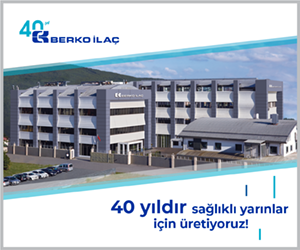Bir hastanın böbrek biyopsisi için hastaneyi geldiğii sırada elde edilen bir görüntüyü kullanarak böbrek hasarının boyutunu nicel olarak ölçme ve böbrekte kalan ömrü tahmin etme yeteneği, şimdi bir bilgisayarlı model olan “yapay zeka” mümkün.
Boston Medical Center’dan üç nefroloji uzmanı olan Vipul Chitalia, MD, David Salant, MD ve Jean Francis, MD ve aynı zamanda bir nefropatolog Joel Henderson, MD bu çalışmaya katkıda bulundu.
New AI technology significantly improves human kidney analysis
The ability to quantify the extent of kidney damage and predict the life remaining in the kidney, using an image obtained at the time when a patient visits the hospital for a kidney biopsy, now is possible using a computer model based on artificial intelligence (AI).
The findings, which appear in the journal Kidney International Reports, can help make predictions at the point-of-care and assist clinical decision-making.
Nephropathology is a specialization that analyzes kidney biopsy images. While large clinical centers in the U.S. might greatly benefit from having ‘in-house’ nephropathologists, this is not the case in most parts of the country or around the world.
According to the researchers, the application of machine learning frameworks, such as convolutional neural networks (CNN) for object recognition tasks, is proving to be valuable for classification of diseases as well as reliable for the analysis of radiology images including malignancies.
To test the feasibility of applying this technology to the analysis of routinely obtained kidney biopsies, the researchers performed a proof of principle study on kidney biopsy sections with various amounts of kidney fibrosis (also commonly known as scarring of tissue). The machine learning framework based on CNN relied on pixel density of digitized images, while the severity of disease was determined by several clinical laboratory measures and renal survival. CNN model performance then was compared with that of the models generated using the amount of fibrosis reported by a nephropathologist as the sole input and corresponding lab measures and renal survival as the outputs. For all scenarios, CNN models outperformed the other models.
“While the trained eyes of expert pathologists are able to gauge the severity of disease and detect nuances of kidney damage with remarkable accuracy, such expertise is not available in all locations, especially at a global level. Moreover, there is an urgent need to standardize the quantification of kidney disease severity such that the efficacy of therapies established in clinical trials can be applied to treat patients with equally severe disease in routine practice,” explained corresponding author Vijaya B. Kolachalama, PhD, assistant professor of medicine at Boston University School of Medicine. “When implemented in the clinical setting, our work will allow pathologists to see things early and obtain insights that were not previously available,” said Kolachalama.
The researchers believe their model has both diagnostic and prognostic applications and may lead to the development of a software application for diagnosing kidney disease and predicting kidney survival. “If healthcare providers around the world can have the ability to classify kidney biopsy images with the accuracy of a nephropathologist right at the point-of-care, then this can significantly impact renal practice. In essence, our model has the potential to act as a surrogate nephropathologist, especially in resource-limited settings,” said Kolachalama.
Three attending nephrologists, Vipul Chitalia, MD, David Salant, MD and Jean Francis, MD, as well as a nephropathologist Joel Henderson, MD, all from Boston Medical Center contributed to this study.
Each year, kidney disease kills more people than breast or prostate cancer, and the overall prevalence of chronic kidney disease (CKD) in the general population is approximately 14 percent. More than 661,000 Americans have kidney failure. Of these, 468,000 individuals are on dialysis, and roughly 193,000 live with a functioning kidney transplant. In 2013, more than 47,000 Americans died from kidney disease. Medicare spending for patients with CKD ages 65 and older exceeded $50 billion in 2013 and represented 20 percent of all Medicare spending in this age group. Medicare fee-for-service spending for kidney failure beneficiaries rose by 1.6 percent, from $30.4 billion in 2012 to $30.9 billion in 2013, accounting for 7.1 percent of the overall Medicare paid claims costs.
###
Funding for this study was provided by grants from the Department of Medicine, Boston University Medical Campus (BUMC), Affinity Research Collaboratives funding (BUMC), Scientist Development Grant (17SDG33670323) from the American Heart Association and Boston University’s Hariri Research Award (#2016-10-009) to VBK, Boston University’s Undergraduate Research Opportunities Program funding to CL and DM, NIH grants (R01- HL132325 & R01-CA175382) to VCC.




















